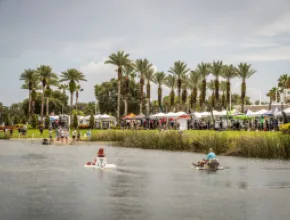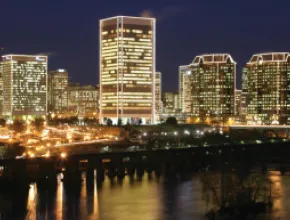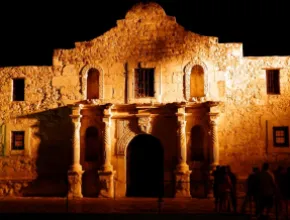One foot on Aruba’s silky sand and you might as well have stepped into a postcard. Cloudless skies, turquoise waters and island hospitality elevate this tiny island, just the size of Washington, D.C., to one of the Caribbean’s hottest destinations.
“We have perfect weather, perfect service and upscale accommodations. We want people to feel this is still an exotic location, with all the comforts of home,” says Rob Smith, president and CEO of the Aruba Hotel and Tourism Association and of the Aruba Convention Bureau for North America, noting the island lies outside the hurricane belt.
For visitors, there is no shortage of group distractions. Aruba is home to over a dozen Las Vegas-style casinos, more than 180 restaurants, myriad water sports, horseback riding, Jeep tours, and deep-sea fishing charters.
Perfectly cliche white-sand beaches meander along the western edge and southern Turquoise Coast, which are sheltered from ocean currents, while the northern and eastern coasts remain largely untouched.
At the island’s northwest tip, among rolling windswept sand dunes, sits the California Lighthouse, named for a vessel, the California, shipwrecked at the point around the turn of the last century. Also on the northern coast are the ruins of an old 15th century pirate castle as well as the abandoned gold mines of Bushiribana.
Golfers migrate north to Tierra del Sol, a world-class golf course filled with wildlife, including a saltwater pond on the fourth hole that is home to several exotic bird species. Birders can also set out for the Bubali Bird Sanctuary, with more than 80 species of migratory birds.
Aruba’s signature wat apana, or divi-divi trees, lie in the interior, as does its most accessible mountain, Hooiberg, meaning haystack, which refers to its shape. From its peak it is possible to see across to the coast of Venezuela. The interior is also home to Arikok National Park, surrounding Mt. Arikok.
As a member state of the Kingdom of the Netherlands, it’s no surprise that one of Aruba’s most distinctive landmarks is an authentic old Dutch windmill, de Olde Molen, built in Holland in 1804 and reconstructed on the island in 1960. The windmill is located in the Palm Beach area, the center for Aruba’s spa resorts and hotels, including the 14-acre Radisson Aruba Resort & Casino and a waterpark scheduled for a 2009 opening.
“My first time on the island was 1997 and a lot has changed since then,” Smith says. “The infrastructure around the resorts was not there. Now all of our resorts are 100 percent Wi-Fi, way ahead of the curve for the Caribbean.”
All major hotels have also undergone recent upgrades following a 2002 government tax incentive, which resulted in some $350 million in improvements since 2004.
For cultural sojourns, Aruba’s bustling capital city Oranjestad features museums, parks, shopping, and dining. The country’s oldest building, Fort Zoutman and Williem III Tower, formerly a Dutch fortress, is now home to the Historical Museum of Aruba. Oranjestad also hosts many of the festivities surrounding Aruba’s colorful Carnival.
Still, the island sells itself on its accommodating nature, according to Smith.
“People on the island grow up in the tourism industry,” he says, “and they really love what they do.”







